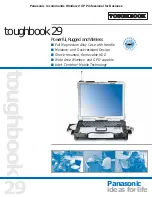
• Do not dismantle, drop or insert any objects into lithium batteries. Do not apply
mechanical loads or pull on the battery’s connection cables. This may cause a
fire or explosion!
• Always observe these instructions when inserting or removing a battery from your
model.
• Ensure that the battery does not overheat during use, recharging, discharging,
transport or storage. Do not place rechargeable batteries next to sources of heat
(e.g. a speed controller or motor) or expose them to direct sunlight. This may
cause the battery to overheat, which can cause a fire or explosion!
• The temperature of the battery must not exceed 60 °C (or the maximum tempera-
ture stated in the manufacturer’s instructions).
• If there are any signs of damage (e.g. if your model is subjected to an impact),
or the battery casing is swollen, discontinue use immediately. Do not attempt to
recharge the battery, as this may cause a fire or explosion!
• Exercise caution when handling the damaged battery and use suitable protective
gloves. Dispose of the battery in an environmentally friendly manner.
• Do not store damaged batteries indoors or in your garage. Damaged or swollen
lithium batteries may catch fire.
• Always use a compatible charger to charge lithium batteries. Do not use NiCd,
NiMH or lead-acid battery chargers, as these may cause a fire or explosion.
• Always select the correct charging mode/current for your rechargeable battery.
• The charge rate for LiPo batteries must not exceed 1 C (or the value stated in the bat-
tery instructions). This means that the charging current must not exceed the battery
capacity (e.g. battery capacity = 1000 mAh, max. charging current = 1000 mA = 1 A).
• The discharge current must not exceed the value stated on the battery.
• For example, if “20 C” is printed on the LiPo battery, the maximum discharge
current is 20 times the battery’s capacity (e.g. battery capacity = 1000 mAh, max.
discharge current = 20 C = 20x 1000 mA = 20 A).
• Exceeding the maximum current may cause the battery to overheat or deform,
which can lead to a fire or explosion!
• The printed value (e.g. 20 C) indicates the maximum current that the battery can
deliver for a short period. The continuous current should not be higher than one
half of the stated value.
• Do not allow the individual cells of a lithium battery to become fully discharged, as
this may permanently damage the battery.
• If your model does not have deep discharge protection or a low battery indicator,
stop using it before the battery is empty.
29
Содержание 1556754
Страница 14: ...A Anschluss Gleichspannung B Anschluss Wechselspannung C Lüftung C B A 14 ...
Страница 31: ...A DC voltage connection B AC voltage connection C Ventilation slots C B A 31 ...
Страница 37: ...37 ...
Страница 38: ...38 ...
Страница 39: ...39 ...












































